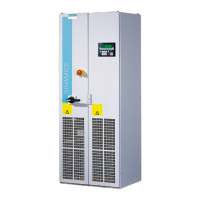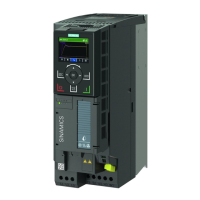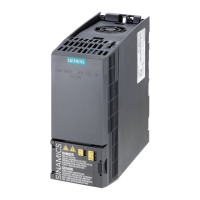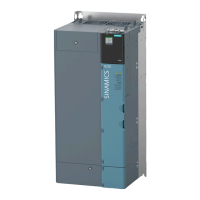Functions
8.10 Safe Torque Off (STO) safety function
SINAMICS G110M Operating Instructions
Operating Instructions, 04/2015, FW V4.7.3, A5E31298649B AD
251
Description of the signal filter
The following are available for the signal processing of the safety-related inputs:
● A tolerance time for the simultaneity monitoring.
● A filter to suppress short signals, e.g. test pulses.
Tolerance time for the simultaneity monitoring
The inverter checks whether the signals at both inputs always have the same signal status
(high or low).
With electromechanical sensors (e.g. emergency stop buttons or door switches), the two
sensor contacts never switch at exactly the same time and are therefore temporarily
inconsistent (discrepancy). A long-term discrepancy indicates a fault in the wiring of a safety-
related input, e.g. a wire break.
When appropriately set, the inverter tolerates brief discrepancies.
The tolerance time does not extend the inverter response time. The inverter selects its safety
function as soon as one of the two F-DI signals changes its state from high to low.
Figure 8-46 Tolerance regarding discrepancy
Filter to suppress short signals
The inverter normally responds immediately to signal changes at its safety-related inputs.
This is not required in the following cases:
● When you interconnect a safety-related input of the inverter with an electromechanical
sensor, contact bounce may result in signal changes occurring, to which the inverter
responds.
● Several control modules test their safety-related outputs using bit pattern tests
(light/darkness tests) to identify faults due to either short-circuiting or cross circuiting.
When you interconnect a safety-related input of the inverter with a safety-related output of

